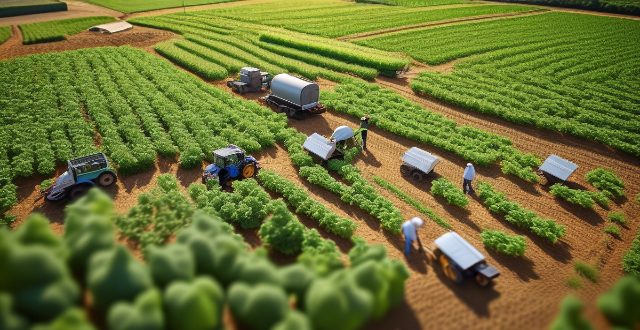Climate-smart technology is essential for farmers to adapt to climate change, but its affordability is a concern for smallholder farmers. Key factors influencing affordability include the cost of technology, access to financing, potential returns on investment, the need for training and education, and market access. Governments can offer subsidies and grants, while microfinance institutions provide tailored loans. Partnerships and research focused on local conditions can also make technology more affordable. Capacity building initiatives like extension services and community workshops further support farmers in adopting these technologies. Addressing these factors can help smallholder farmers benefit from climate-smart technology.

Is Climate-Smart Technology Affordable for Smallholder Farmers?
Climate-smart technology refers to the tools, practices, and techniques that are designed to help farmers adapt to climate change and mitigate its effects on agricultural production. These technologies can range from simple agronomic practices to complex machinery and information systems. The affordability of such technologies for smallholder farmers is a crucial consideration, as these farmers often operate on limited budgets and face numerous constraints in accessing resources and financing.
Key Factors Influencing Affordability
1. Cost of Technology
- Initial Investment: The upfront cost of purchasing or acquiring climate-smart technology can be a significant barrier for smallholder farmers with limited capital.
- Maintenance Costs: Ongoing expenses for maintenance, repairs, and upgrades must also be taken into account.
2. Access to Financing
- Credit Availability: Smallholder farmers may have difficulty securing loans or other forms of credit to finance the purchase of new technologies.
- Interest Rates: High interest rates on loans can increase the overall cost of acquiring climate-smart technology.
3. Returns on Investment
- Yield Increases: The potential for increased yields through the use of climate-smart technology must be weighed against the costs.
- Risk Reduction: Technologies that reduce risks associated with climate variability and extreme events can provide long-term savings by protecting crops and livelihoods.
4. Training and Education
- Skill Development: Smallholder farmers may require training to effectively utilize new technologies, adding another layer of cost.
- Information Access: Access to information about available technologies, their benefits, and how to use them is essential for making informed decisions.
5. Market Access
- Market Prices: If climate-smart technology leads to higher quality products, it could potentially fetch better prices in the market.
- Market Demand: The availability of markets for the products resulting from the use of climate-smart technology is crucial for ensuring profitability.
Overcoming Barriers to Affordability
1. Government Subsidies and Grants
- Direct Support: Governments can offer subsidies or grants to help smallholder farmers acquire climate-smart technology at reduced costs.
- Tax Incentives: Tax breaks or rebates for investing in climate-smart practices can make these technologies more affordable.
2. Microfinance and Credit Facilities
- Microfinance Institutions: These organizations can provide small loans specifically tailored to the needs of smallholder farmers.
- Leasing Options: Leasing equipment rather than buying outright can reduce upfront costs and make technology more accessible.
3. Partnerships and Collaborations
- Public-Private Partnerships: Collaborations between government agencies and private companies can lead to shared investments in climate-smart technology.
- Farmer Cooperatives: Groups of farmers working together can pool resources to invest in technology that benefits all members.
4. Research and Development
- Affordable Innovations: Research focused on developing low-cost solutions suitable for smallholder farming conditions can lead to more affordable options.
- Adaptation to Local Conditions: Customizing technology to fit local environmental and socioeconomic conditions can improve its effectiveness and affordability.
5. Capacity Building
- Extension Services: Extension agents can provide advice and training on climate-smart practices, helping farmers maximize their benefits.
- Community Workshops: Workshops and demonstrations can educate farmers about the advantages of climate-smart technology without high individual costs.
In conclusion, while the initial costs of climate-smart technology can be prohibitive for smallholder farmers, various strategies such as government support, microfinance opportunities, partnerships, research tailored to local conditions, and capacity building initiatives can help make these technologies more affordable and accessible. By addressing the key factors affecting affordability, smallholder farmers can harness the power of climate-smart technology to enhance their resilience and productivity in the face of climate change.